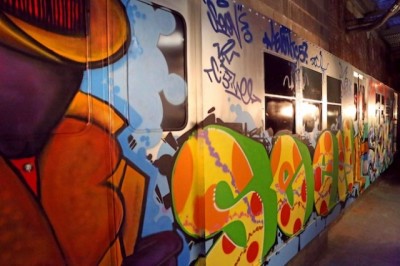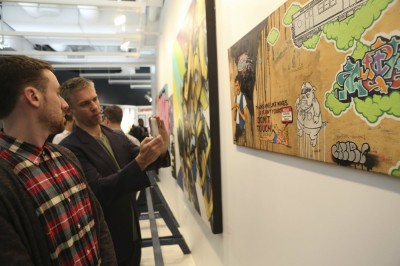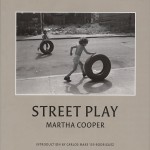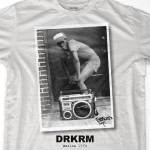 Since Banksy launched his month long residency on the streets of New York, his much lauded and sought after stenciled work has everyone talking about graffiti, from Mayor Bloomberg, who deems it a sign of decay and loss of control, to art students defending its legitimacy, and landlords cashing in on their Banksy enhanced properties. But according to graffiti historian Sacha Jenkins, all the buzz about the world’s most prominent graffiti artist is riddled with misconceptions. “Real graffiti has always been about letters, and that’s the fundamental difference between Banksy’s figurative art and the people in the graffiti underworld,” explains Jenkins. “We call ourselves writers; the media called it graffiti.”
Since Banksy launched his month long residency on the streets of New York, his much lauded and sought after stenciled work has everyone talking about graffiti, from Mayor Bloomberg, who deems it a sign of decay and loss of control, to art students defending its legitimacy, and landlords cashing in on their Banksy enhanced properties. But according to graffiti historian Sacha Jenkins, all the buzz about the world’s most prominent graffiti artist is riddled with misconceptions. “Real graffiti has always been about letters, and that’s the fundamental difference between Banksy’s figurative art and the people in the graffiti underworld,” explains Jenkins. “We call ourselves writers; the media called it graffiti.”
“Real graffiti has always been about letters, and that’s the fundamental difference between Banksy’s figurative art and the people in the graffiti underworld,” explains Jenkins. “We call ourselves writers; the media called it graffiti.”
The editor, TV producer (VH1) and author, who has penned a number of books on graffiti and co-authored Eminem’s autobiography “The Way I Am” took some time out of from the exhibit to school us on the language of graffiti, the effect it had on his life, how freight trains are the new canvas, and why Chris Brown’s attempt at graffiti is a colossal fail.
 How did “Write of Passage” come to fruition?
How did “Write of Passage” come to fruition?
I’m an Editorial Director for Mass Appeal Magazine and we took this idea to Red Bull. I wanted to educate the public at large and hip them to the 40 year long history and the tradition that has been passed down to the folks around the world. It’s a great American art form, like rock & roll, jazz, the blues, and everything else people love about American culture. Graffiti is part of that pantheon and the world at large recognizes it. Red Bull is not an American company and they see the value and understand there is a culture here that speaks to people around the world. If you understand the root of the language of graffiti that was born in New York and Philadelphia, you can go anywhere in the world and you’ll find people of all races who participate in this writing culture and you can understand where they are coming from. This is because a percentage of what they might paint is an extension of what was pioneered in New York.
It’s fair to say that most people believe anything painted on a street wall is graffiti. “Write of Passage” clarifies that is not the case. Is Banksy more of a street artist?
[Graffiti] was called writing because they wrote their names. In the writing subculture, it’s all about language, words and focusing on that. In street art there might be dolphins, a rainbow or a smile, things that are familiar to folks in everyday life. Graffiti is a language most are not familiar with and are intimidated by. You are not really considered a writer unless you focus exclusively on letters and your desire is to create a letter form that makes you stand out. You can be a graffiti artist that incorporates faces and smiles in your writing. In the case of a Banksy, he has writing in his work but there isn’t much attention placed on the detail of creating writing or a word that is stylistically important. The words in his piece are just there to help communicate the bigger idea. The big idea in writing is the letters and words.
You don’t hesitate to call out people posing as writers. You penned a pretty hilarious and direct open-letter to Chris Brown addressing him adopting the graffiti artist moniker.
I’m not gonna say he has no artistic talent because obviously as a recording artist he does. As someone who works in the medium of spray paint, which I’ve seen him do, that is no easy task. He has what people in the culture call “can control”. He knows how to handle a can but just because he is painting a horse or donkey doesn’t make it graffiti. You have to work on your letters. With all the paint control in the world and all the money in the world, it will still take him years to understand the aesthetic of letter forms and know what’s been done before and what it will take to improve on that. I heard he is getting mentored by Slick from the West Coast who is certainly a respected guy who completely understands what it takes. I just don’t think you come off the street and say, “I’m Chris Brown, I’m painting a horse and I’m down.” That’s not how it works. You can paint a horse if you want but if your letters aren’t tight than you’re a guy who can paint a horse.
 Will it ever be possible to shake the negative connotation of graffiti?
Will it ever be possible to shake the negative connotation of graffiti?
As long as it’s illegal to write on other people’s property, it’s always going to look like vandalism in the eyes of those people who don’t want it on their property. That’s a clear fact. Some graffiti writers will argue they were painting trains and making them beautiful and they did it to be creative, and now the MTA will have an ad wrap around an entire bus. Guess what? It’s capitalistic America and for the right price I’m sure the MTA will let you paint whatever you want. When you see a Banksy on your property illegally, people wanna dance on the ceiling. They understand they are gonna make money. If a graffiti artist wrote on your property, you might not understand what is being communicated and there is no money in it. I think that’s the fundamental difference between how New York is reacting to what Banksy is doing and the reaction a writer would get. If you’re dedicated enough to still be doing illegal graffiti, good luck, ‘cause if you get caught you’re looking at a serious felony. There are a lot of positive outlets for young people who have artistic talents and are fans of this art form. It can be communicated in a number of ways that don’t involve crime or what one might view as vandalism.
So are there still writers who bomb trains?
There are still people keeping it real, as they say. A lot of these people are older and whiter. Many think that graffiti is done exclusively by poor Black and Latino kids. A lot of the practitioners right now are white men in their thirties. There is burgeoning subculture of freight train graffiti that’s happening now too. You paint a train New Jersey and it ends up in Ohio.
How did you discover graffiti?
I moved to New York from Silver Spring, Maryland in 1977 and my mother told me to go outside and play. I had a football looking to make friends and everyone else had a magic marker. I learned that everyone had an alias and a graffiti name. Even my sister who is six years older than me had a graffiti name. She wasn’t a serious artist but she could write her nickname in a very stylized way. I stuck with it and then crack hit and most of the kids began to sell drugs. They would say, “Why are you still doing this? I’m gonna go make $1,000 a day. Graffiti is so passé.” That was in the ‘80s.
 Graffiti kicked off your career in media…
Graffiti kicked off your career in media…
I ended up publishing a graffiti ‘zine when I was 17. It led me to publish other magazines, write for establish publications, write books, and produce television shows. Graffiti got me started on my media career. It’s been a very positive happening in my life and I was never the best at it. I was able to take away the power that lies in saying I’m a writer at 12 and as an adult, I literally became a writer. There is something very narcissistic about it. It comes out of an environment where people have very low self-esteem and are looking to channel emotions and energy. It’s about saying I’m someone and you are gonna recognize me. That confidence helped a lot of people apply it to other mediums. Many of these kids who started this are now pushing 50 or 60 and they were essentially doing an exercise in branding through perfecting their names. You can choose to look at all the negative attributes, but if you strip away all the positive attributes you can channel that energy in a smart way.
I interviewed Lady Pink [an iconic writer] years ago, and she was adamant about separating the art from hip-hop culture, whereas many other artists see it as one of the elements of hip-hop. What are your thoughts on it?
In 1980 there was a pretty definitive Village Voice article that kinda put graffiti, breakdance, DJing and rapping all in one article. At that point, in 1980, graffiti was happening for 10 years, breaking was around 10 years, DJ for seven and eight years, so these cultures already existed. What they had in common was this energy of young people. It just so happens many of those young people were renaissance and they were involve with all these elements at once. A lot of the writers who started in out in the late ‘60s and early ‘70s had nothing to do with hip-hop because hip-hop did not exist. One of the well-known early writers in New York was this Greek kid called Taki183. Maybe he liked some black music but hip-hop had nothing to do with his existence in the ‘60s and early ‘70s. The attitude that comes with being a boisterous writer and saying “look at me” is very in line with an average rapper. I am not gonna correct somebody who says it is part of hip-hop, because it is in a sense. But it also predates hip-hop.
Photos by Robert Adam Mayer/Red Bull Content Pool
Link
Blackbookmag.com – Write of Passage
- Write of Passage - October 28, 2013
- Old School Mood Boards - June 17, 2013
- Chloe Resort 2014 - June 12, 2013





